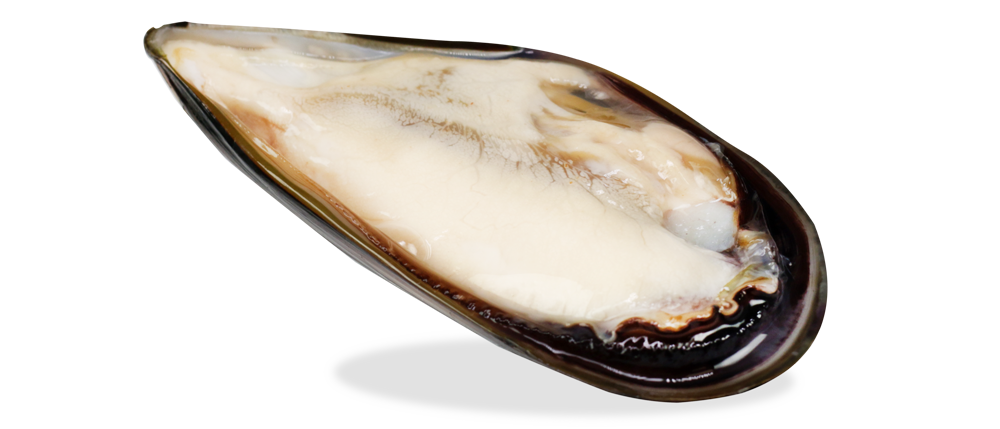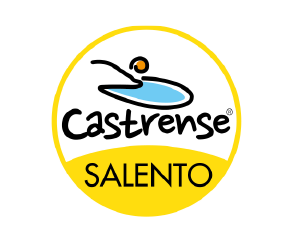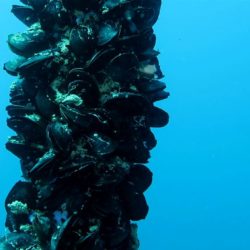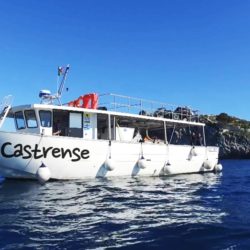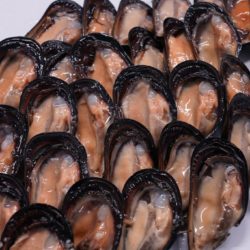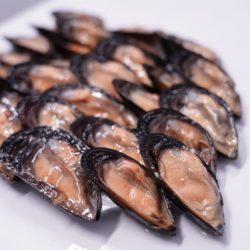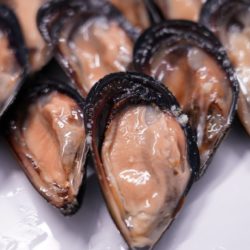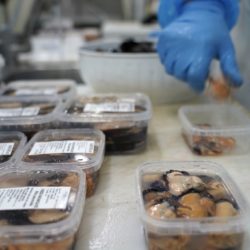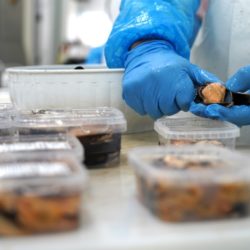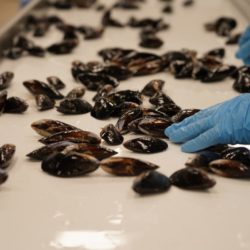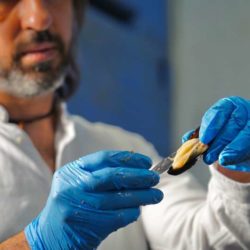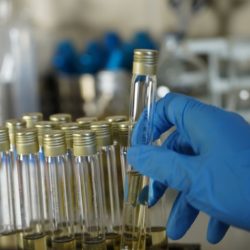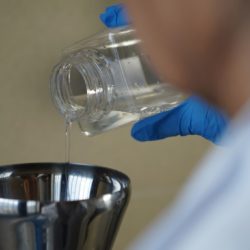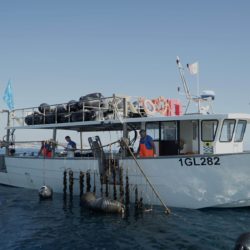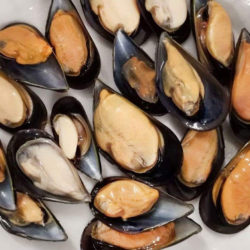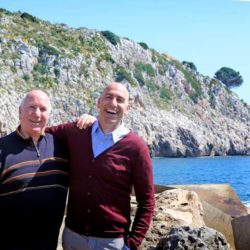The Castrense Mussel is the flagship of MareVivo’s seafood production. It is the result of extensive experience in the field, combining with the latest mussels farming technologies and the knowledge gained over 30 years in close contact with the sea.
The entire farming process of the Castrense Mussel (Mytilus galloprovincialis) is carried out with full respect for the marine habitat, with particular care given to the mussel’s natural growth, as it filters nutrients directly from the sea water springs of the Bay of Castro.
This stretch of water, off the Adriatic coast of Salento, gives the Castrense its unique qualities thanks to the sea’s purity and the abundance of phytoplankton and mineral salts.
The innovative offshore farm complies with the strictest bio-sustainability standards and, in fact, it provides a positive contribution to the marine environment by encouraging the natural reproduction of local fish species. Its anchoring system features holes that serve as shelters for fish, inviting them to settle.
Our commitment to environmental protection in the cultivation of the Castrense Mussel has earned us an important recognition from the international organization “Friend of the Sea”, which awards bio-sustainable seafood production following rigorous audits.
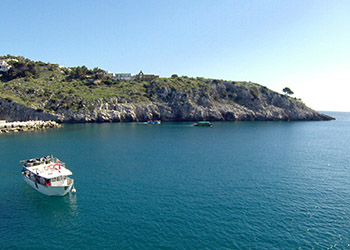
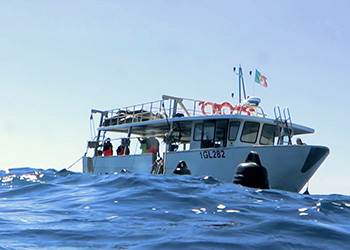
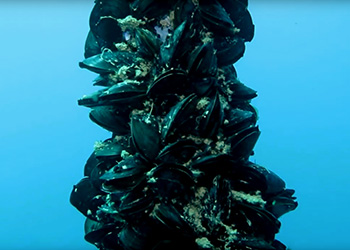
They’ve Already Chosen the Castrense


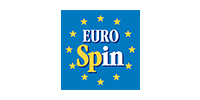
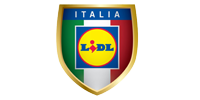







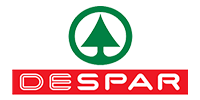
DESCRIPTION
– Ingredients/additives in tray or net: Mussels of the species MYTILUS GALLOPROVINCIALIS, farmed or re-immersed in the Bay of Castro, Salento, at an average temperature of 12°C. The finishing operations give the mussels their typical Castrense organoleptic properties.
– Allergens present: MOLLUSKS (EU Reg. 1169/11)
– Other products processed in the facility: CRUSTACEANS and FISH
– Shelf-life: up to 10 days from purification. Mussels must be alive and vital at the time of purchase.
MICROBIOLOGICAL CHARACTERISTICS
| Escherichia coli | < 230 MPN/100 g |
| Salmonella spp. | Absent in 25g |
| Amnesic Shellfish Poison (ASP) | < 20 mg/Kg |
| Paralytic Shellfish Poison (PSP) | < 800 μg/Kg |
| Lipophilic toxins: okadaic acid and total derivatives | < 160 μg/Kg |
| Lipophilic toxins: total pectenotoxins | < 160 μg/Kg |
| Lipophilic toxins: total azaspiracids | < 160 μg/Kg |
| Lipophilic toxins: total yessotoxins | < 3.75 mg/Kg |
| Potentially pathogenic Vibrio cholerae | Absent in 25g |
| Potentially pathogenic Vibrio parahaemolyticus | Absent in 25g |
CHEMICAL CHARACTERISTICS
Lead (Pb), Cadmium (Cd), Mercury (Hg), dioxins, dioxin-like PCBs and non-dioxin-like PCBs: in compliance with EC Regulation 1881/06 and subsequent amendments.
SENSORY CHARACTERISTICS
Delicate iodine aroma; uniform light yellow-orange color; pleasantly salty flavor with a sweet aftertaste; appearance is soft and velvety; texture is tender and almost melting.
NUTRITIONAL VALUES
| Protein content: 7.4% | ISTISAN 96/34 |
| Total fats: 2.68% of which Saturated: 0.49% |
Annex 10A EC Reg. 1492/92 EC Reg. 2568/91 |
| Carbohydrates: 1.0% of which Sugars: 0.1% |
ISTISAN 96/34 |
| Moisture: 85.9% | ISTISAN 96/34 |
| Energy value per 100g: (Kjoule) 259 Kcal/100g |
ISTISAN 96/34 |
| Ash content: 3.1% | ISTISAN 96/34 |
| Energy value per 100g: (Kcal) 62 Kcal/100g |
ISTISAN 96/34 |
| Dietary fiber: < 0.01% | AOAC Official Method 920.86 (1995) |
| Sodium: 288.0 mg/kg | ISTISAN 96/34 |
